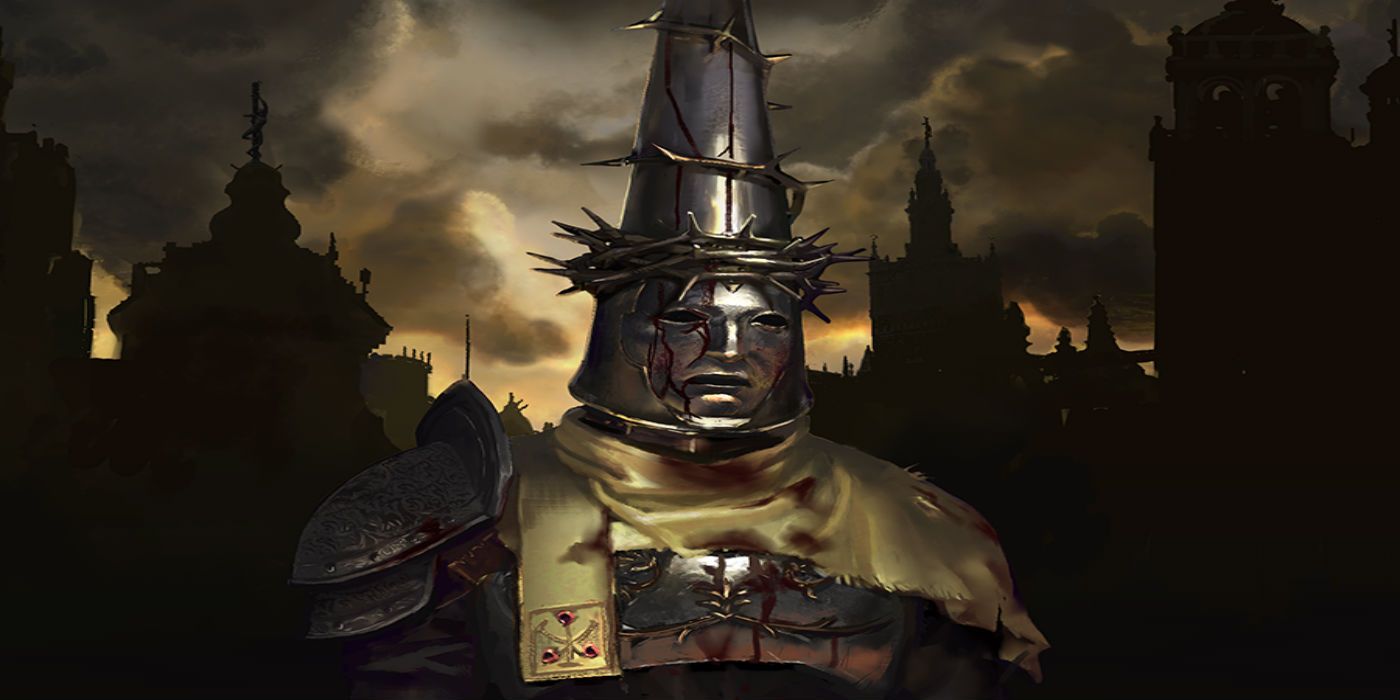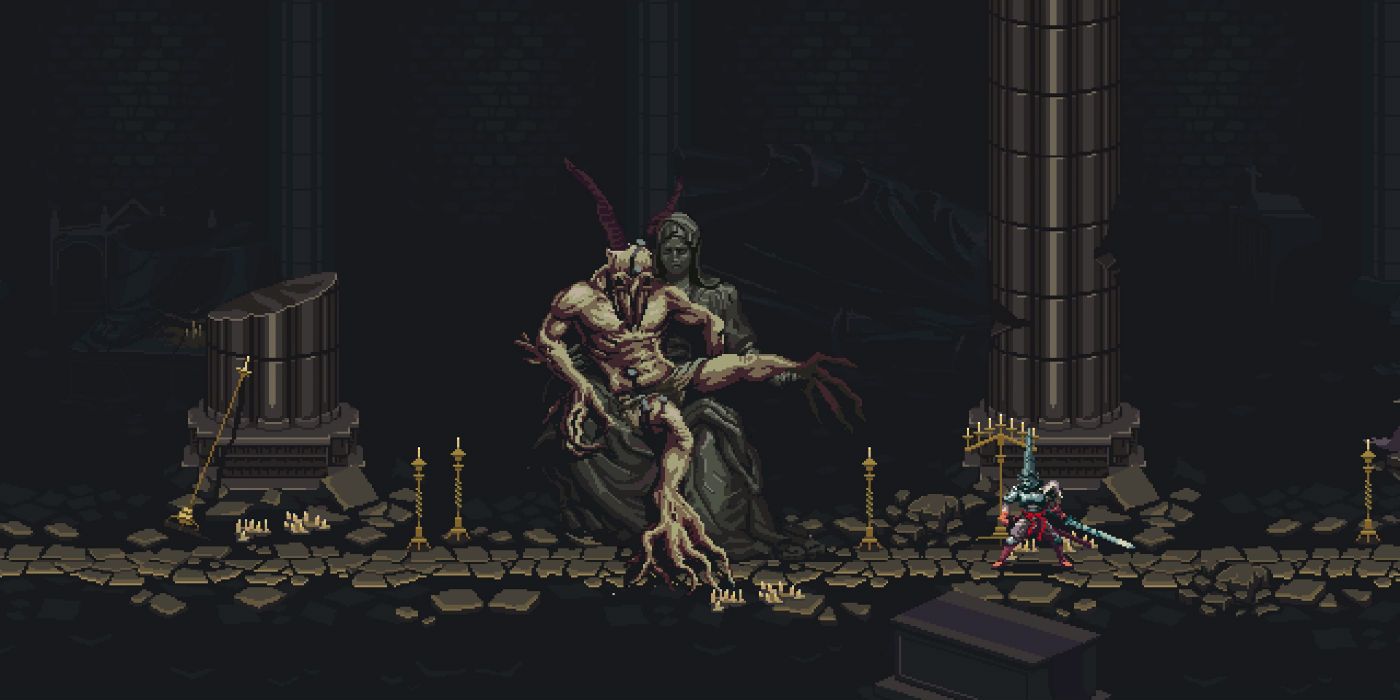Blasphemous is a perfectly competent "Souls-like" game, but while it's high on stark beauty and vicious violence, it comes up short on substance.
Stop me if you've heard this one before: Blasphemous is a lot like Dark Souls. That may be one of the most hackneyed and reductive things to say in contemporary games criticism, but in this case, there's simply no ignoring the similarities. The Souls series has had a tremendous influence on all sorts of modern video games, but there's a fine line between "inspiration" and "imitation." Blasphemous is mostly the latter, for better and for worse. From its reproduced mechanics and imposing bosses to its abandoned, dying world and piecemeal lore, Blasphemous could almost be considered a tribute to the Souls series with a dash of Castlevania. However, this 2D action-platformer still gets by on its own merit, even if most of that merit just comes from its artistry and atmosphere.
Blasphemous was successfully Kickstarted in 2017 by Spanish developer The Game Kitchen, and has now been published by Team17. The game is set in the ruined land of Custodia, a dogmatically religious empire where faith saturates every aspect of society. This religion is wholly dedicated to The Miracle of Greatest Pain, a imperceptible divine happening that makes all sin and guilt "visibly and tangibly manifested" in everyone. People inflict many different kinds of torment on themselves in order to rid themselves of that guilt, calling it their Penance. The player controls an errant warrior known only as The Penitent One, carrying a cursed sword and wearing a tall ceremonial helmet. At the beginning of the game, The Penitent One awakens among huge piles of corpses, all naked but wearing the same helmet. Leaving the mass grave behind, he sets out to find three artifacts that will unlock the path to the source of The Miracle itself.
It's definitely an intriguing premise, but tragically, it doesn't end up amounting to much from a narrative standpoint. As The Penitent One jumps, climbs and fights through the forsaken regions of Custodia, he'll pick up various items that include breadcrumbs of lore (in true Dark Souls fashion). Unlike Dark Souls, however, the majority of these tidbits feel like flavor text on a Magic card rather than integral pieces woven into an overarching story. The verbose item descriptions and lore dumps from other characters come off like a handful of short stories, all of which have the same themes of religious dogma and human suffering. Even after putting everything together, all of the events of this world are simply at the mercy of The Miracle, which the game itself says is "incomprehensible." The pervasive use of Judeo-Christian imagery doesn't actually tie into any real-world religious themes, either - it's just there to make things look cool.
That's not necessarily a bad thing, though, because what truly makes Blasphemous stand out is its remarkable production values. The exceptional art design is paired with excellent sprite work and elaborate animations to create one of the better-looking "Metroidvania" games out there. The twisted, decrepit forms of the enemies and the violence of their attacks is matched only by The Penitent One's own gory kill moves. From furious flagellants to nuns with melted faces, there's a surprising variety of enemies - even their death throes are unique and detailed. The pixelated landscapes that make up the game's backgrounds are also extremely well done, and I often found myself marveling at the stark beauty of Custodia. All of this feeds into the powerful atmosphere of the game, which is topped off with minimalistic and absorbing ambient music.
However, all those frames of animation cause a different issue for the game: sluggish movement and combat. Some might say that this is to be expected in a game so similar to Dark Souls, but Blasphemous deliberately bills itself as a "fast-paced hack-and-slash game." Unfortunately, it isn't. Don't get me wrong - combat is certainly functional in its own right, it's just not fast or responsive in the way Dead Cells or Hollow Knight are, for example. There are some needless annoyances, like an absurdly long healing animation and touch damage in close-range melee combat, but fighting is still brutal fun once you've got a grip on it. The real problem is the lack of depth: The Penitent One only has a handful of moves that are upgraded individually throughout the entire game, and customization is very limited. There are no other weapons to acquire, and you'll probably only come across four or five different spells in a single playthrough. This gives the game a very rigid playstyle, and while the player may not necessarily need other tools to deal with enemies, it would be much more interesting if there was more experimentation involved.
Blasphemous may be a case of style over substance, but that style still carries it a long way. It's very clear that a lot of time and effort went into making this game look and sound as good as possible. If you're craving a well-produced Soulslike or Metroidvania and you don't mind slower combat and a one-note narrative, then Blasphemous will give you an intense fix.
Blasphemous is available now on Steam, PlayStation 4, Xbox One and Nintendo Switch. A Steam code was provided to Screen Rant for the purpose of this review.


